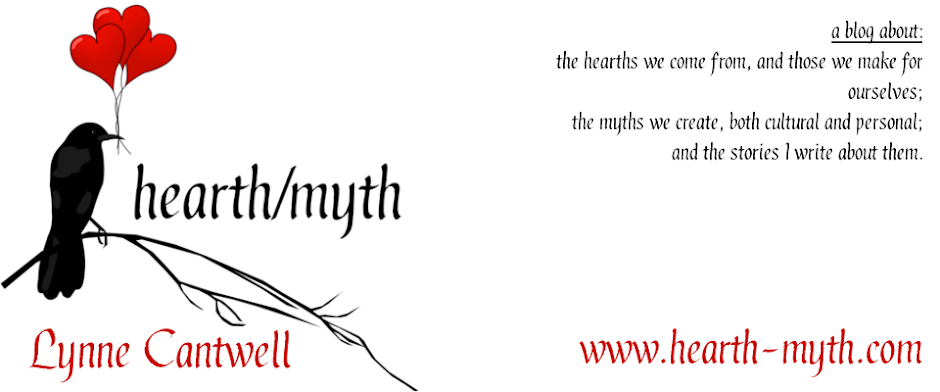I laughed in empathy, because this year really has been a dumpster fire. From the multitude of musicians and actors we've lost (Florence Henderson of "The Brady Bunch" and Ron Glass of "Firefly" being the most recent), to this month's election results (I mentioned I'm a progressive, right?), to the standoff over the Dakota Access Pipeline at the Standing Rock Sioux Reservation in North Dakota (#waterislife), this year has been miserable and disheartening in ways too numerous to count.
It might not be the sort of year you want to commemorate on a Christmas tree. But if you were going to do it, this is the ornament that would sum things up.
I showed the photo to my daughter Amy and said, "Do you have any felt?" Not only did she have felt, but she had more fabric paint than any normal person should own. And a hot glue gun. And a red jingle bell. And my daughter Kat came up with sparkly ribbon.
In short: It was on.
The creator of the original dumpster fire ornament, Jennifer Brooks, published her step-by-step directions in the Minneapolis Star-Tribune today. Hers are way funnier than ours, so please go and read them. (Besides, I'm indebted to her for checking the AP style manual to see whether "dumpster" still needs to be capitalized. It doesn't.) But I think ours is prettier, if you can say a dumpster fire is pretty. Here's how we made it.
Materials:
1 Sheet of copy paper or notebook paper
5 sheets of felt -- 1 each of red, orange, yellow, and white (ours is white with sparkles), plus 1 color of your choice for the dumpster
Needle and thread
Fabric paint (we used red, gold, and blue, but whatever strikes your fancy) or embroidery floss
Hot glue gun
Jingle bell (optional)
Something to hang it on the tree with (we used 1/8-inch-wide metallic gold ribbon)
Directions:
1. Draw pattern pieces for the dumpster, the snow, and the flames on the copy paper and cut them out. I made the front of the dumpster 3" x 2" -- the size of a standard business card -- and attached a parallelogram to the left side. Amy drew patterns for the snow, and cut out the flames freehand (which is why I got her involved -- I knew I would be topping out my drawing skills with the parallelogram). She cut enough for 7 flames total, but feel free to go crazy and stuff in as much fire as you think the year deserves.
2. Cut 2 pieces of felt using the dumpster pattern piece. Pick 1 to be the front of the dumpster. Use fabric paint, or backstitch with embroidery floss, to outline the dumpster panels. Draw 2016 on the right-hand panel with a pen or pencil, and go over the numbers with fabric paint or backstitch. If you used fabric paint, let it dry for several hours or overnight.
3. Sew the front dumpster piece to the back dumpster piece. I used buttonhole stitch, but use whatever you can do that will hold the thing together. Don't sew the top shut -- that's where the flames go.
4. Sew or hot glue the snow to the top and bottom edges of the dumpster.
5. Stack your flame pieces (never mind what Jennifer did -- yellow is the hottest part of the flame, so it goes closest to the wick) and tack or glue them together.
6. Glue a row of flames to the back side of the front dumpster piece. Then glue the next row of flames to the back of the first row, and so on, 'til you run out of fire.
7. Affix your hanging loop. I cut a length of ribbon that was about 13" long, doubled it, and tied the cut ends together to make the loop. Then I cut a tiny slit near the top of the back dumpster piece and threaded the loop through, so the knot was hidden inside the dumpster. Amy then glued the dumpster back to the last row of flames, and also glued the loop to the middle flame in the back row.
8. Thread your jingle bell, if you're using one, onto the hanging loop. Then hang the whole shebang on your tree.
***
 The other thing I've been doing, when I'm not helping to create dumpster fires, is working on the NaNo novel -- and I'm pleased to report that I finished it tonight. Maggie in the Dark, the first book in the Transcendence trilogy, is 50,670 words (according to NaNo's official validator). It's another urban fantasy, and it's kind of a dumpster fire right now (for one thing, I'm pretty sure I've named two characters Aaron). Editing will commence in January. But the first draft is in the can, and normal life can now resume.
The other thing I've been doing, when I'm not helping to create dumpster fires, is working on the NaNo novel -- and I'm pleased to report that I finished it tonight. Maggie in the Dark, the first book in the Transcendence trilogy, is 50,670 words (according to NaNo's official validator). It's another urban fantasy, and it's kind of a dumpster fire right now (for one thing, I'm pretty sure I've named two characters Aaron). Editing will commence in January. But the first draft is in the can, and normal life can now resume.Rest assured that I'll have more to say about this novel later. For now, happy writing, happy crafting, and come on, 2017.
***
These moments of crafty blogginess have been brought to you, as a public service, by Lynne Cantwell.

